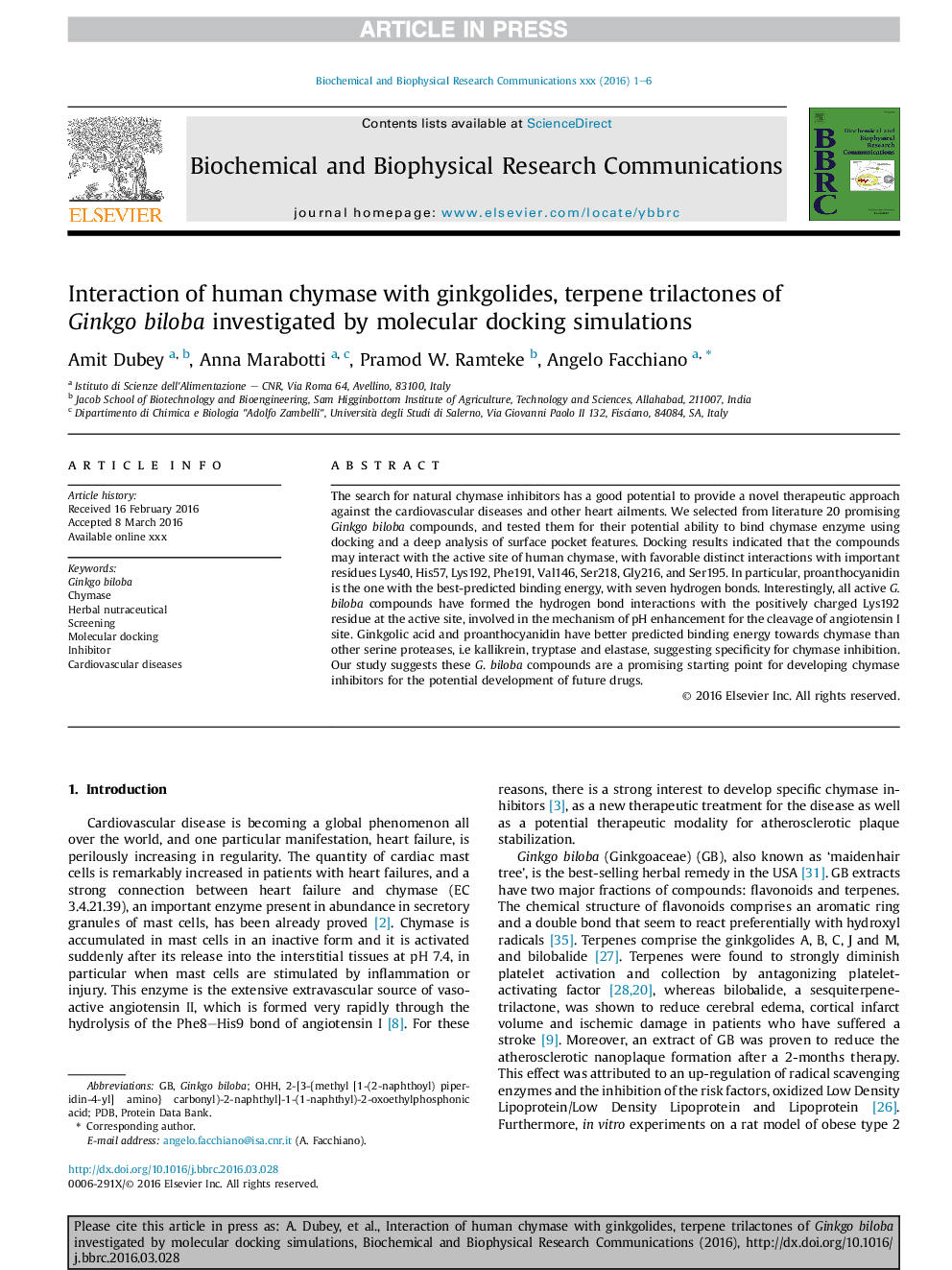| Article ID | Journal | Published Year | Pages | File Type |
|---|---|---|---|---|
| 10748652 | Biochemical and Biophysical Research Communications | 2016 | 6 Pages |
Abstract
The search for natural chymase inhibitors has a good potential to provide a novel therapeutic approach against the cardiovascular diseases and other heart ailments. We selected from literature 20 promising Ginkgo biloba compounds, and tested them for their potential ability to bind chymase enzyme using docking and a deep analysis of surface pocket features. Docking results indicated that the compounds may interact with the active site of human chymase, with favorable distinct interactions with important residues Lys40, His57, Lys192, Phe191, Val146, Ser218, Gly216, and Ser195. In particular, proanthocyanidin is the one with the best-predicted binding energy, with seven hydrogen bonds. Interestingly, all active G. biloba compounds have formed the hydrogen bond interactions with the positively charged Lys192 residue at the active site, involved in the mechanism of pH enhancement for the cleavage of angiotensin I site. Ginkgolic acid and proanthocyanidin have better predicted binding energy towards chymase than other serine proteases, i.e kallikrein, tryptase and elastase, suggesting specificity for chymase inhibition. Our study suggests these G. biloba compounds are a promising starting point for developing chymase inhibitors for the potential development of future drugs.
Keywords
Related Topics
Life Sciences
Biochemistry, Genetics and Molecular Biology
Biochemistry
Authors
Amit Dubey, Anna Marabotti, Pramod W. Ramteke, Angelo Facchiano,
